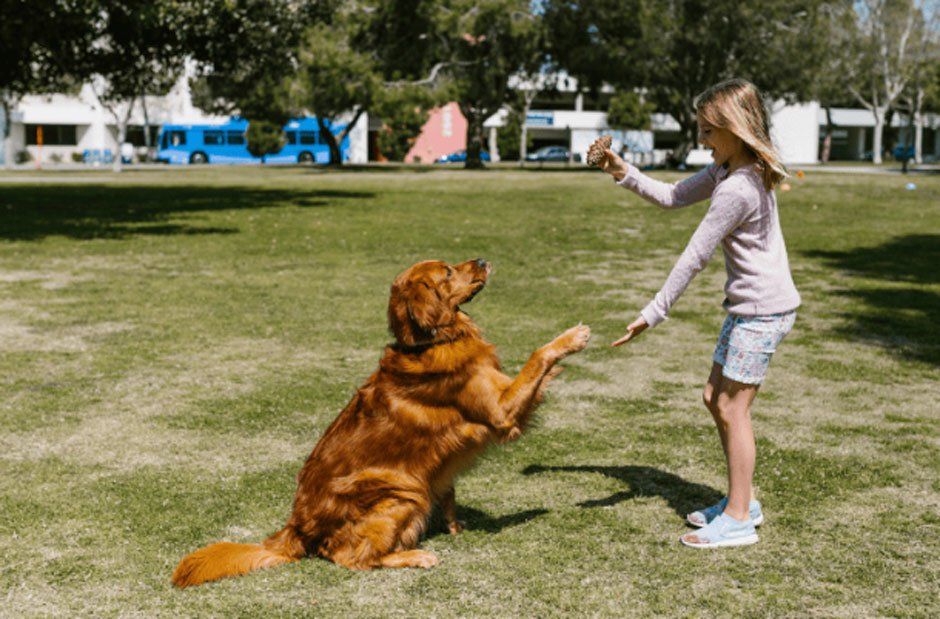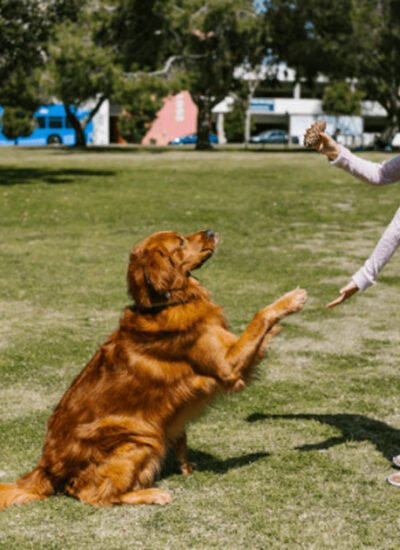 As dog owners, we all want our furry companions to lead active, healthy lives. When they’re enjoying playtime at the park or going for long walks, joint health plays a huge role in maintaining their energy and mobility. But just like humans, dogs need regular care and exercise to keep their joints strong, especially as they age or recover from injury.
As dog owners, we all want our furry companions to lead active, healthy lives. When they’re enjoying playtime at the park or going for long walks, joint health plays a huge role in maintaining their energy and mobility. But just like humans, dogs need regular care and exercise to keep their joints strong, especially as they age or recover from injury.
Joint pain, arthritis, or simply wear and tear over time can cause discomfort, but the right exercises can help reduce pain, improve mobility, and protect your dog’s joints for years to come. In this guide, we’ll cover the top five exercises that can help strengthen your dog’s joints, promote flexibility, and support overall mobility.
1. Swimming: Low-Impact Full-Body Workout
One of the best exercises for dogs with joint issues or arthritis is swimming. It’s a low-impact activity that provides an excellent full-body workout without placing undue stress on your dog’s joints. The buoyancy of the water helps support your dog’s body weight, allowing them to move freely while reducing strain on their legs, hips, and back.
Swimming engages your dog’s muscles and joints without the harsh impact of land-based exercises like running. It also promotes cardiovascular health, flexibility, and strength, which are all crucial components for healthy joints.
Why It’s Great for Joint Health:
- Strengthens muscles without stressing the joints
- Improves flexibility and range of motion
- Provides a low-impact way to stay active
Start with short sessions to get your dog accustomed to swimming, and gradually increase the duration as their endurance builds. Always supervise your dog during water activities to ensure they’re safe.
2. Slow, Controlled Walks: Build Endurance and Flexibility
For dogs with arthritis or joint pain, slow, controlled walks are an excellent way to maintain mobility without overexerting their joints. Walking is a natural, weight-bearing exercise that helps maintain healthy bones, muscle tone, and flexibility.
Keep the pace slow and steady, especially for older dogs or those recovering from surgery. Gradually increasing the distance over time can help your dog build endurance and strength without causing strain on their joints.
Why It’s Great for Joint Health:
- Low-impact and easy on the joints
- Increases joint mobility and flexibility
- Promotes muscle strength and endurance
Choose soft, even terrain for your walks. Hard surfaces like concrete can increase joint impact, especially for dogs with existing joint issues. Also, watch for signs of discomfort and adjust the pace accordingly.
3. Range of Motion Exercises: Improve Flexibility and Strength
Range of motion (ROM) exercises are designed to help your dog move their joints through their full range, improving flexibility and preventing stiffness. These exercises are particularly beneficial for older dogs or those with arthritis, as they help maintain joint mobility and prevent the buildup of scar tissue around the joints.
Simple ROM exercises include gently stretching your dog’s legs, encouraging them to move their joints through gentle motions like forward and backward movements. You can also try exercises like “sit to stand,” where you help your dog go from a sitting position to a standing position.
Why It’s Great for Joint Health:
- Improves flexibility and prevents stiffness
- Helps maintain joint mobility and range
- Reduces the risk of joint injuries
Always be gentle when performing ROM exercises with your dog. Don’t force their limbs into uncomfortable positions, and always stop if your dog shows signs of pain or discomfort.
4. Balance and Stability Exercises: Build Joint Support
Balance and stability exercises are a fantastic way to strengthen the muscles around your dog’s joints, providing additional support to the ligaments and cartilage. These exercises focus on challenging your dog’s balance and proprioception, or their ability to sense the position of their body in space.
Start with simple exercises, such as encouraging your dog to balance on a soft surface, like a cushion or mat. You can also use balance discs or inflatable platforms to make the exercise more challenging.
Why It’s Great for Joint Health:
- Strengthens muscles around the joints
- Improves stability and coordination
- Reduces the risk of injury and falls
Always ensure that your dog’s balance exercises are conducted in a safe environment free of sharp objects or slippery surfaces. You can gradually increase the difficulty by adding new challenges as your dog gets stronger.
5. Tug-of-War: Strengthen Muscles and Build Joint Stability
Tug-of-war is a great bonding activity that also helps strengthen your dog’s muscles and joints. By engaging in a tug-of-war game with a durable rope or toy, you can encourage your dog to use their core muscles, back, and legs, which helps build strength and joint stability.
Why It’s Great for Joint Health:
- Strengthens muscles, particularly in the back and limbs
- Improves joint stability and coordination
- Promotes mental stimulation and fun
Tug-of-war is great for dogs that enjoy interactive play, but always monitor the intensity of the game. Use a sturdy rope or toy to avoid any accidental tearing, and keep the sessions short to prevent overexertion.
Why Supplementing with Joint Support Is Key
While exercise is crucial for maintaining joint health, supporting your dog with the right supplements can enhance the benefits and protect their joints long-term. Freedom Joint Drops from Pup Labs is an excellent option for pet owners looking to boost their dog’s joint health. These drops contain five joint-soothing supernutrients, including hyaluronic acid, flavonoid superfoods, and MSM, which help restore synovial fluid levels, rebuild cartilage, and reduce inflammation.
Freedom Joint Drops can be a valuable addition to your dog’s daily routine, working in tandem with these exercises to ensure that their joints stay strong, flexible, and pain-free. The unique combination of ingredients in Freedom Joint Drops targets joint discomfort from multiple angles, providing long-term support for active dogs and those with arthritis.
Final Thoughts
Joint health is important for your dog’s overall well-being and mobility, and exercise plays a vital role in maintaining strong, healthy joints. You can help strengthen their muscles, improve flexibility, and reduce the risk of joint pain or injury by incorporating these five exercises into your dog’s routine.
Be sure to supplement these exercises with joint care products like Freedom Joint Drops to ensure your dog’s joints stay healthy and strong for years to come. Start adding these exercises to your dog’s routine today, and watch them run, play, and live their best life, pain-free!





Leave a Reply